Clear creek canyon
Preserved forever
After nearly 35 years of working to protect the land and water of the Clear Creek watershed between Loveland Pass and Golden, Clear Creek Land Conservancy (CCLC) has joined forces with Colorado Open Lands through a formal merger to expand our joint conservation work in this region. The merger was official on October 30, 2020.
“Clear Creek Canyon is the most impressive and least developed canyon along the Front Range, but 40 years ago it was threatened by residential and industrial development. Local activists organized CCLC to help lead what has been a very successful effort to preserve the canyon. The COL merger insures the gains so far and opens new opportunities for further preservation. I expect great things!” said Greg Holden, President of the Board of Clear Creek Land Conservancy.

Every year, tens of thousands of people enjoy CCLC’s accomplishments when they hike the Beaver Brook Trail near Genesee and Golden, several miles of which traverse land conserved by CCLC.
The CCLC Board of Directors have become a local advisory committee within the larger Colorado Open Lands organization and continue to advance the mission of locally focused land management and preservation in the Clear Creek watershed, while taking advantage of the expanded capacity that a statewide organization such as Colorado Open Lands can provide.
Paul Phillips, Chairman of the COL Board of Directors, said at the time of merger, “Colorado Open Lands is truly delighted to be joining forces with Clear Creek Land Conservancy! This merger unites two vibrant, well-run, well-respected conservation organizations which will benefit the public and promote their important shared vision of preserving the most iconic remaining open lands in our beloved Colorado. The high quality of CCLC’s conservation easements, the superb opportunities they provide for public access and recreation to Front Range communities, and the dedicated supporters of CCLC will make COL stronger and better able to fulfill its statewide mission of critical land conservation.”
CCLC was founded in 1986 with the completion of its first conservation easement. Local resident Carla Swan Coleman gifted CCLC the 240-acre Coleman conservation easement, protecting over a mile of the Beaver Brook Trail near the Lookout Mountain Nature Center. This gift marked an important turning point for the watershed. At the time, most of the area was under private ownership and offered very attractive sites for development.
A group of local citizens who prized the area formed the land conservancy to combat that development threat. In partnership with local government groups like Denver Mountain Parks and Jefferson County Open Space, and with the support of private donors, they protected a significant portion of these cherished landscapes. At the time of merger with COL, CCLC owned 650 acres outright, and had conservation easements on a total of 2,000 acres, an enormous accomplishment in local land conservation.
“Permanently preserved natural areas are an extraordinary treasure for all ages, races, genders, religions, incomes, and physical abilities. Our goal in starting CCLC was and remains preservation of Clear Creek Canyon – the ‘Royal Gorge on Denver’s doorstep’ – for all and for all time. After a third of a century, joining with COL allows CCLC to protect this vision, which ensures future financial sustainability and preservation of these magnificent lands in perpetuity,” said Rock Pring, President Emeritus and one of the founders of Clear Creek Land Conservancy.
Moving forward, COL is excited to assist and advance the excellent partnerships and progress that CCLC has established. The Clear Creek watershed is a critically important landscape for recreation, offering myriad opportunities right in Denver’s backyard. COL is honored to take on the duty of caring for the wildlife, water, and open space that the CCLC team has so carefully conserved.
Colorado Open Lands embraces the mission statement of CCLC, which stated in part, “We envision Clear Creek Canyon as a place where people and nature exist together for the benefit of both – where hikers, bicyclists, anglers, hunters, climbers, and nature lovers can appreciate the natural and historical significance of the canyon while the area’s plants, wildlife, water quality, and scenery are protected to ensure that this beautiful canyon remains in its near-to-natural state forever.” Colorado Open Lands will work to advance that mission long into the future and is grateful for the opportunity to serve the community in this capacity.

Partnership for Preservation:
Clear Creek Land Conservancy’s history is intricately tied to the history of preservation in the Clear Creek Canyon area, which has been going on for over 100 years. Here are the high points of this history and CCLC’s founding and contribution:
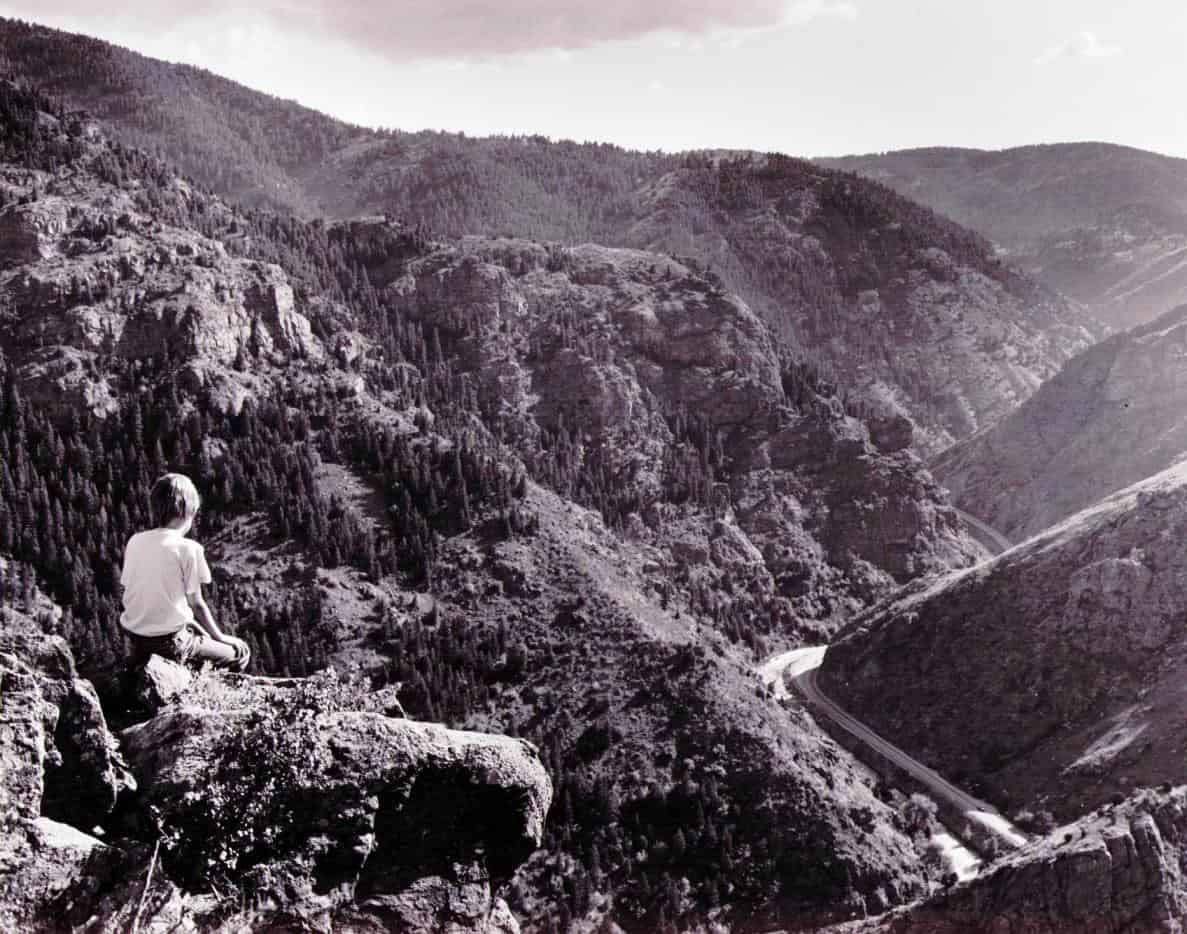
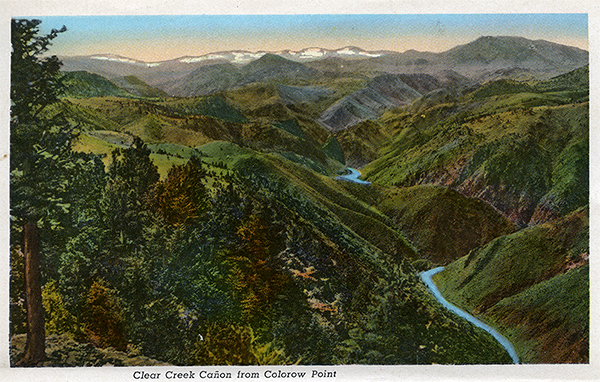

Carla Swan Coleman
1912 – Genesee Park – The City & County of Denver acquires their first (and largest) mountain park, most of it in Clear Creek Canyon, running from I-70 down to the river between the Genesee Park and El Rancho exits (1,400 acres).
1915 – Colorow Point Park – Denver acquires its smallest mountain park near the Nature Center (0.34 acres).
1979 – Buffalo Bill’s Grave (Lookout Mountain Park) – Denver acquires its third Mountain Park in the basin (66 acres).
1919 – Beaver Brook Trail – Colorado’s first “historic trail,” 8 miles long, is laid out along the Canyon’s south benches by pioneer rancher Strode Ralston and the Colorado Mountain Club. Property owners on the route – including City and County of Denver, Mount Vernon Country Club, Rilliet Park Association, and Northwoodside Inc. – provide rights-of-way, but it takes almost 90 more years to assure complete, permanent protection for the trail and its surrounding properties, a major goal of CCLC.
1956 – Lookout Mountain Preserve and Nature Center – multimillionaire Charles Boettcher donates his lodge to the county (now 400 acres).
1967 – Northwoodside Inc. – nonprofit foundation created by Carla Swan Coleman, her husband, and her father to promote conservation by enlightening the public to the need for conservation and creating a “primitive area” along the south rim of main-stem Clear Creek Canyon.
1971 – PLAN Jeffco – the citizens; organization founded to promote good government and land preservation in Jefferson County.
1972 – Jefferson County Open Space (JCOS) Program – PLAN Jeffco’s campaign results in a vote of county residents to create one of the nation’s first local government open space preservation agencies, funded by a 0.5% county sales tax.
1986 – Clear Creek Land Conservancy (CCLC) – CCLC is born, inspired by Carla Coleman, organized by residents on both sides of the Canyon, and aided by Colorado Open Lands and Trust for Public Land.
1986 – Northwoodside Conservation Easement – CCLC founder Carla Coleman donates the first conservation easement to CCLC, backed up by the Trust for Public Land, permanently preserving an open space area protecting over a mile of the Beaver Brook Trail, just west of the Jeffco Nature Center (240 acres).
1988 – Goltra Quarry – Chicago millionaire O.R. (Ren) Goltra planned a gravel surface mine on 1,800 acres on the north face of the Canyon near Guy Gulch. The first major coalition of Foothills neighbors (Canyon Area Residents for the Environment) formed in 1987 and organizations implemented a successful campaign to save the Canyon resulting in the Jefferson County Commissioners’ denial of the quarry in 1991. Geologists, lawyers, wildlife experts, and community members came together to preserve Clear Creek Canyon in all of its natural wonder and community importance.
1989 – Lost Park Woods – a Lakewood couple gives CCLC their forested Cody Park retirement lot, running north from Spruce Road to the Beaver Brook Trail (10 acres).
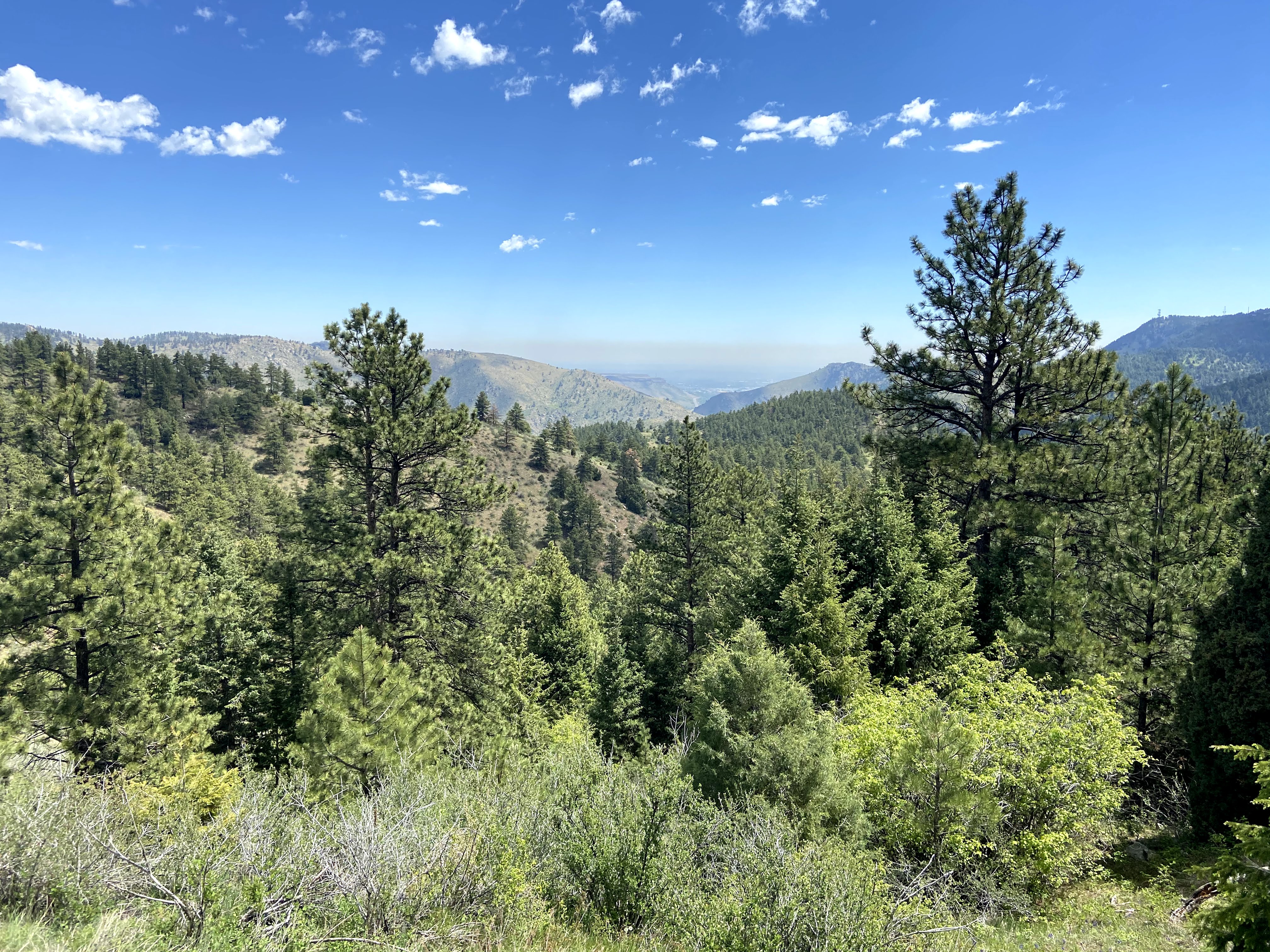
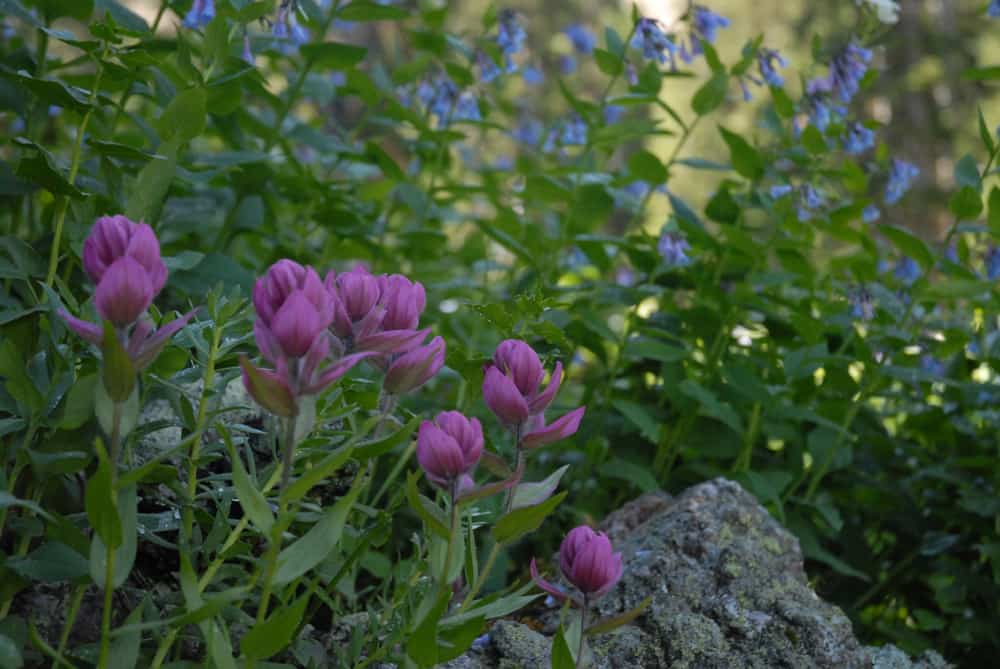
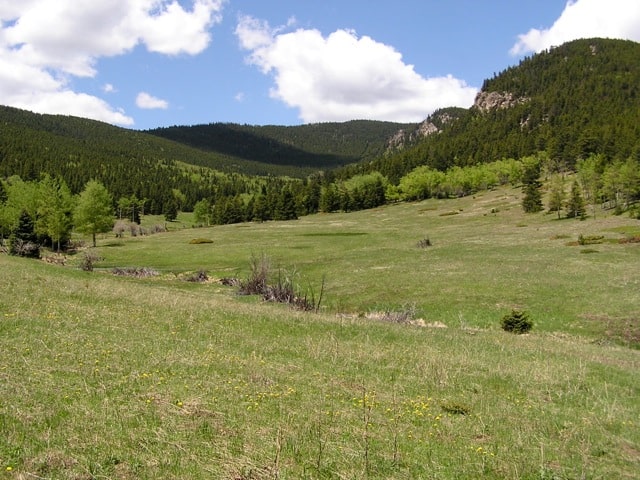
1994 – CCLC Master Plan – the Conservancy finances a 2-year-long citizen-government-nonprofit planning effort, resulting in a master plan for preservation of the Canyon which is adopted by the Jefferson County Commissioners.
1994 – Mount Zion Park – JCOS purchases open space land north of the Nature Center on the Lariat Loop Road (372 acres)
1995 – Recreation & Public Purposes Act Land – the U.S. Government awards CCLC lease rights to 2 U.S. Bureau of Land Management properties near Tunnel 3, which the Conservancy later transfers to JCOS for permanent ownership (240 acres).
1995 – Brannan/Sand & Gravel Lands – JCOS acquires the company’s mining lands, a portion lying in the Canyon mouth outside Golden (100 acres).
1995 – Mountain Ridge Trust Lands – O.R. Goltra sells six parcels in the inner gorge and north side benches to JCOS (776 acres).
1996 – Dieker Ranch “4-Way-Mega Deal” – CCLC negotiates with JCOS and the Mount Vernon Country Club Metropolitan District to preserve over 1,000 acres including:
1. purchase of the Dieker Ranch northwest of Mount Vernon by JCOS and CCLC with title going to JCOS and a conservation easement to CCLC (177 acres),
2. matched by Mount Vernon’s donation of a conservation easement to CCLC preserving the north end of its Custer Wash open space, protecting another 3/4 miles of the Beaver Brook trail (160 acres)
3. coupled with an agreement that, if JCOS can acquire the Norman Ralston property immediately north of the Clubhouse by 2006 (360 acres), then
4. Mount Vernon will donate another conservation easement preserving its Custer Ranch half-section north of the Ralston property (320 acres).
1996-97 – Mouth of the Canyon Properties – JCOS buys eight properties where the river enters Golden (69.56 acres).
1996-97 – The Crystal Cave – In moving testimony opposing the Sheep Mountain Quarry proposed by O.R. Goltra, Carla Coleman shared stories of her grandmother seeing the Arapaho hike up the canyon with young boys, lighting torches on Centennial Cone, and placing the boys in crystal caves for rites of passage. Few people believed Carla at the time of her testimony, but when Goltra started to cut in a road to connect to Highway 6 at Tunnel 1 in Clear Creek Canyon, he uncovered a crystal cave. Unfortunately, Carla passed away shortly before the cave was uncovered, so she never knew how true her grandmother’s stories were. The cave was preserved by JCOS’s purchase from O.R. Goltra (80 acres).
1996-97 – U.S. Bureau of Land Management Land – JCOS acquires an unused parcel of land on the county line from the federal government (43.95 acres).
1998 – Rilliet Park – the Rilliet Park Association donates a conservation easement to the Conservancy covering all the Rilliet Park community’s undeveloped lands (273.5 acres). Chuck Miller and Wilbur Stephan were instrumental in seeing this project through.
1998 – “S.O.S. Bond Issue.” – Jefferson County voters overwhelmingly approve a $160,000,000 bond issue (brought to the ballot by PLAN Jeffco) for JCOS to buy more open space. PLAN Jeffco VP John Litz crafted the idea and details of the bonding.
1999 – Centennial Cone Park – largest-ever JCOS acquisition saves over 5 square miles of the north side including Centennial Cone, Elk Creek, and Indian Gulch in purchase from O.R. Goltra (3,329 acres).
1999 – Bear Creek Development Corp. Lands – JCOS completes deal with Golden Attorney Leo Bradley acquiring over 6 miles of Clear Creek (1,500 acres).
1999 – ACX Corp. Property – through his firm, Joe Coors, Jr. donates a conservation easement in the canyon mouth next to its subdivision on Route 93 (73 acres).
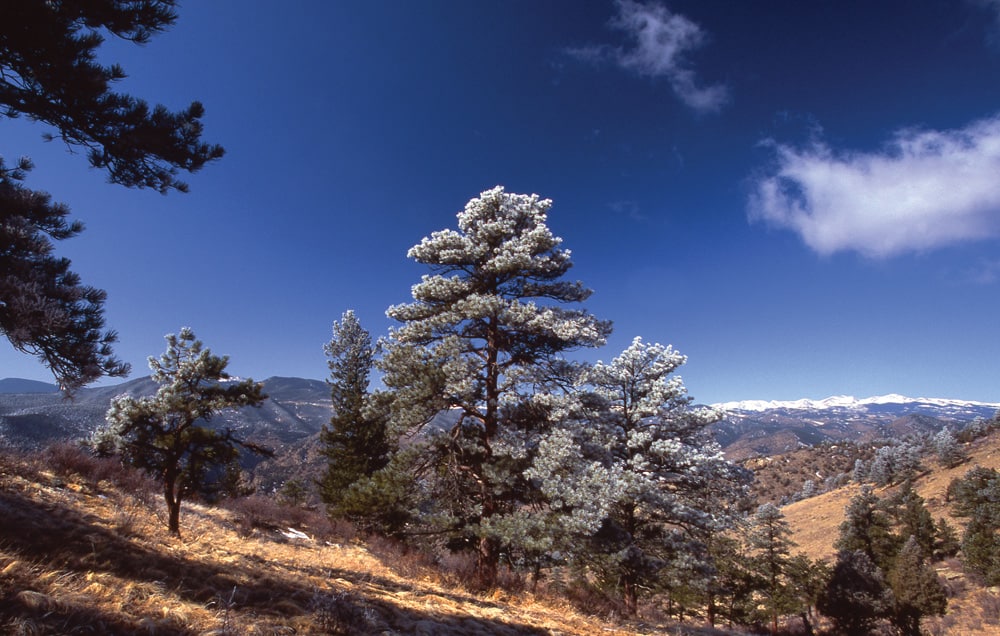
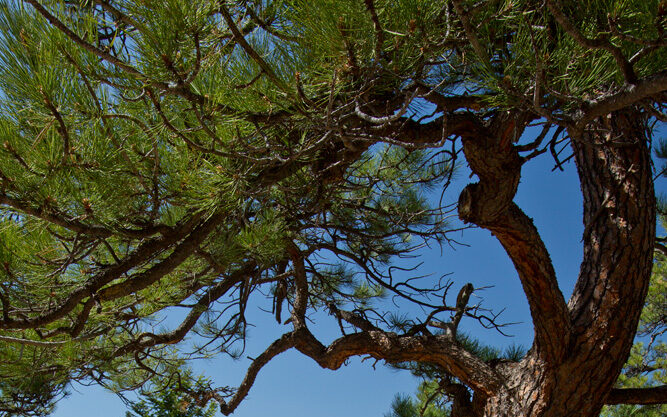

2000 – Northwoodside Lands – Northwoodside Inc. donates a conservation easement to the Conservancy covering its lands on Lookout Mountain adjoining Rilliet Park (40 acres).
2000 – Chavez Trail Land – CCLC buys the Black Property, a private inholding on the west side of Denver Mountain Parks’ Genesee Park and sells it to the City of Denver (10 acres). This makes it part of Denver Mountain Parks and allows the historic Chavez Trail to be reopened.
2000 – Clear Creek County Open Space Commission – created as a county agency by the Clear Creek County Commissioners; CCLC and other organizations helped in the planning.
2002 – Jefferson County Open Space Plan – Jefferson County Commissioners adopt a far-sighted Parks, Recreation and Open Space Master Plan emphasizing Clear Creek Canyon preservation.
2003 – Elmgreen Homestead – open space property on both sides of the Clear Creek and Jefferson County lines running from I-70 down into the canyon, preserved by Clear Creek County and JCOS in cooperation with national and local land trusts, with CCLC drafting the conservation easement (437.5 acres).
2004 – Ken Paul No. 1 – Professional photographer Ken Paul donates CCLC’s first conservation easement on the north side of the Canyon, off Robinson Hill Road near the Gilpin County line (29.19 acres).
2005 – Norman Ralston Ranch Property – For over 40 years, community members including Carla Coleman, Bob Wiemer, Jan Wilkins, and Jeff Bogard worked to convince Norm Ralston to preserve this property. After selling the Custer Wash to Mount Vernon Country Club in the 1970s, Norm stopped using his remaining property for cattle and mostly retired. What followed were years of visits with firewood, pies, and conversation that eventually led to Northwoodside Inc. fulfilling its vision of preserving the Ralston property immediately north of the Mount Vernon Country Club. The Ralston Trust first donated a conservation easement covering the property to CCLC, followed by Northwoodsides’ purchase of the fee property (360 acres).
2005 – Ken Paul No. 2 – Ken Paul donates a conservation easement to CCLC preserving another portion of his property, the Conservancy’s first with provision for a future residence (37.93 acres).
2006 – Estella Leopold’s Shack West – internationally known ecologist and paleobotanist Dr. Estella Leopold, daughter of pioneering conservationist Aldo Leopold, gives CCLC a conservation easement on her wilderness property and historic pioneer cabin in Gilpin County, south of Robinson Hill Road, the Conservancy’s first in Gilpin County (260 acres).
2008 – Mount Vernon Custer Ranch Property – the residents of Mount Vernon Country Club Metropolitan District vote overwhelmingly to donate a second conservation easement to CCLC preserving Mount Vernon’s north half of Section 1 (320 acres of former Custer Ranch property) to match the 2005 preservation of the Norman Ralston Ranch property, adjacent to the south and immediately north of the Mount Vernon Country Club.
2008 – CCLC – Northwoodside Merger – CCLC’s future is transformed when the Board of Directors of Northwoodside Inc. – the foundation created by Carla Coleman in 1967 to preserve a primitive area around the Beaver Brook Trail – declares “Mission Accomplished,” dissolves, and donates all its assets to CCLC. CCLC becomes the owner of 645 preserved acres on the southeast side of the canyon (with our conservation easements preserving them), a caretaker’s house, a caretake, and substantial resources.
2008 – Northwoodside Lots – As part of the Northwoodside asset transfer (above), the foundation also gives a conservation easement to CCLC preserving four recently acquired lots in Rilliet Park, abutting CCLC’s Rilliet Park conservation easement (4 acres).
2008 – The Clear Creek County Greenway – CCLC is honored to be asked by the Clear Creek County Open Space Commisssion to help it to create a visionary greenway along the river from the Jeffco line west all the way across Clear Creek County to the Clear Creek headwaters at the Eisenhower Tunnel. The County plans to acquire riverside properties and interests in property to provide a green corridor for hikers, bikers, anglers, and other non-motorized activities, and CCLC will assist by holding conservation easements on greenway properties.
2009 – The Oxbow Property – Clear Creek County and CCLC acquire the “first step” of the Greenway, a beautiful “hidden” jewel on an oxbow bend in the river just over the line from Jefferson County (74.42 acres). The County buys it for just over $1 million and donates a conservation easement on it to CCLC. The Greenway march has begun.



2013 – Greenway Planning & Construction: Oxbow Property – CCLC provides review and approval for beginning trail construction of the Greenway Trail through the Oxbow Property.
2016 – Bryant Property – CCLC works with a landowner to preserve his residential property that abuts Mount Vernon Open Space and helps preserve views from Genesee Mountain Park (6+ acres).
2016 – Arapaho Ranch – Colorado Open Lands transfers its conservation easement on the Arapaho Ranch near Nederland to CCLC, making it CCLC’s first in Boulder County. This allowed COL to accept the donation of title ownership to the property (40 acres).
2016-on – Mount Vernon Pasture – CCLC worked with the Mount Vernon Country Club Metro District community as it examines the benefits of a conservation easement for its pasture lands immediately south of the Country Club (~150 acres).
2017-on – Historic Georgetown – Historic Georgetown Inc. asked CCLC to preserve two different groups of parcels HGI owns to save them from development. The southern group, on the Guanella Pass Road up Leavenworth Mountain, sits on the scenic backdrop of that historic 19th century mining town, and the other group, the Wanderer Parcels, is in the town itself, against its eastern mountain side.
2019 – Lost Park Woods gets a CE – The 1989 gift to CCLC of Lost Park Woods is merged into the Ralston Ranch CE to give Lost Park Woods’ 10 acres permanent protection (which land ownership alone cannot guarantee).
2020-on – MVCC South Custer Wash – CCLC is also working with Mount Vernon on an amazing fourth conservation easement covering all the rest of its Custer Ranch purchase, from the southern boundary of its 1996 conservation easement south to the dead of the Custer (Sheepshank) Wash (~160 acres).
2020-on – More Conservation in the Works – CCLC is also working with other communities and individuals on preservation projects in the three-county Clear Creek Basin.
October 30, 2020 – THE CCLC-COL Merger – To assure continued preservation as well as a sound financial future for the properties in the land trust, Clear Creek Land Conservancy merged with COLORADO OPEN LANDS. CCLC’s Board of Directors became the “Clear Creek Local Advisory Board” for COL, continuing to work and expand the “Partnership for Preservation!”
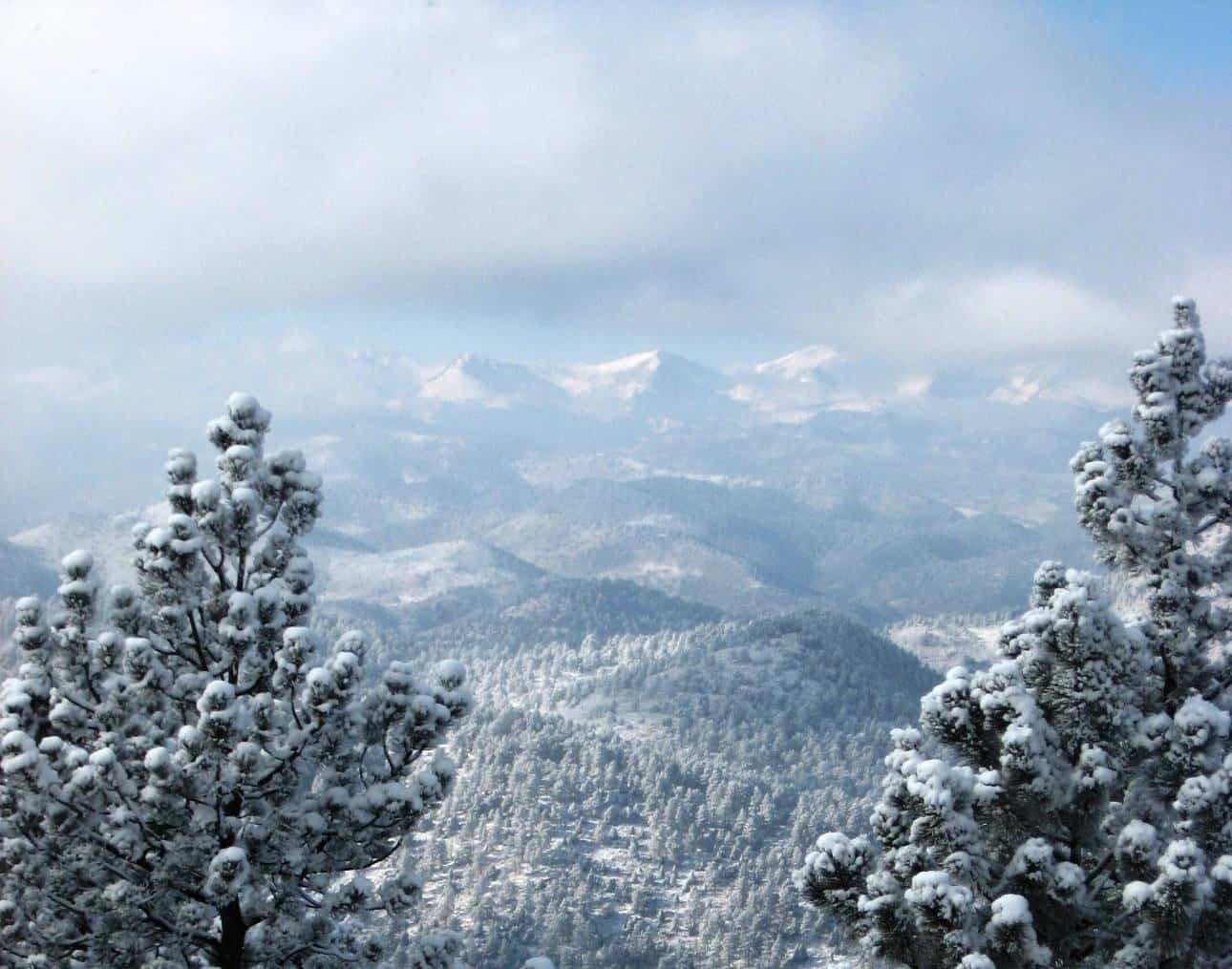
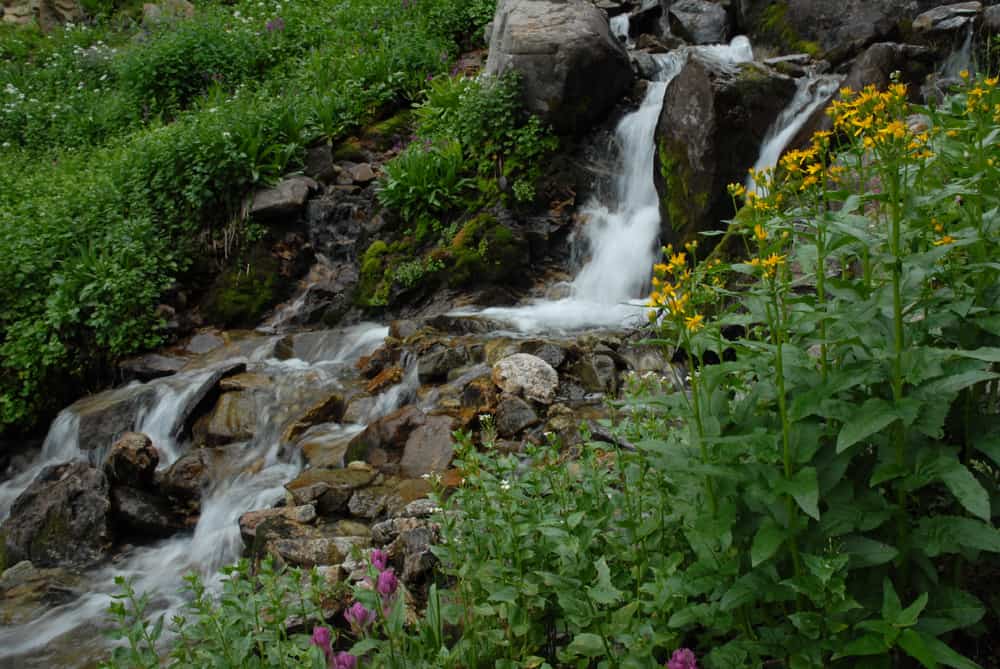

CCLC would not have accomplished most of its projects without the support, advice, and input of community members, landowners, and partners. We are forever grateful for your help. This legacy of conservation is a reflection of your contributions!
To sign up for Colorado Open Lands e-news updates and find out about future events, click here.
